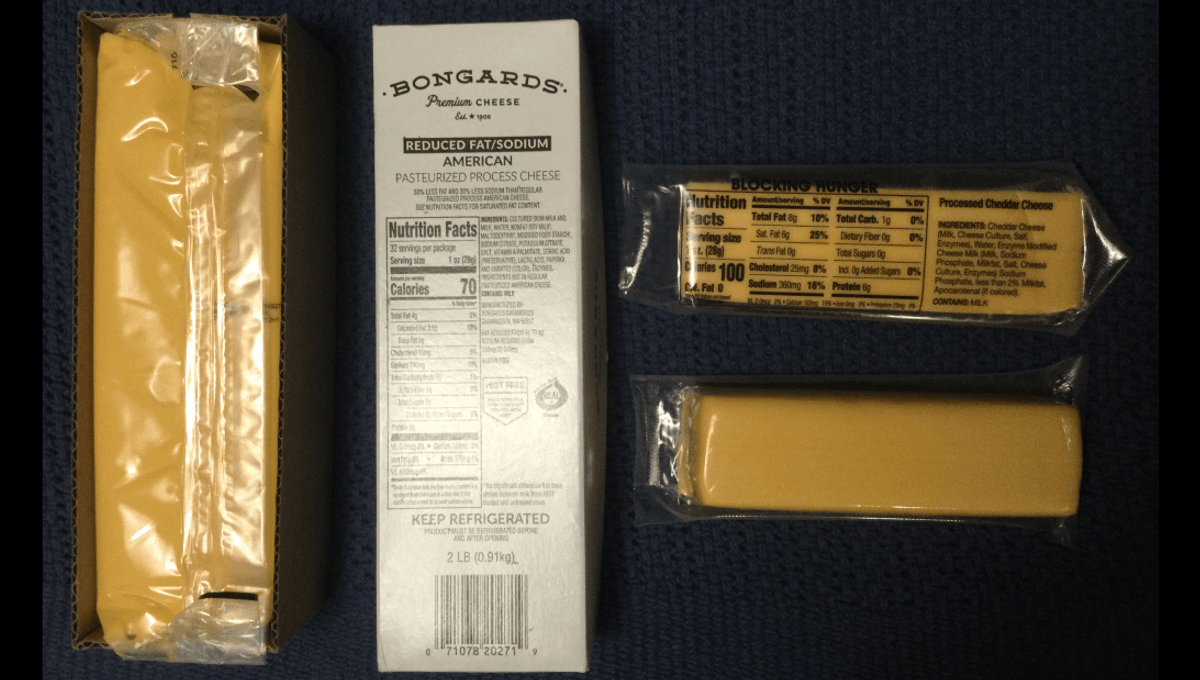-
Feed de Notícias
- EXPLORAR
-
Páginas
-
Blogs
-
Fóruns
Have You Heard About America’s Government Cheese Caves? They've Got Over 600 Million Kilograms Of The Stuff Stashed Away

Have You Heard About America’s Government Cheese Caves? They've Got Over 600 Million Kilograms Of The Stuff Stashed Away
A treasure trove of around 635 million kilograms (1.4 billion pounds) of cheese sits a few hundred feet beneath the ground in the US, having been stashed there by the government. Why? Well, it's kind of a long story.
The rest of this article is behind a paywall. Please sign in or subscribe to access the full content. The peculiar origins of “Government Cheese,” as The Farmlink Project reports it is known, date back to the 1970s when a dairy shortage and 30 percent inflation surge on its associated products spurred something of a gold rush for cheese by the US government. With President Jimmy Carter at the helm, it was decided that the only way to tackle the issue was to give America’s dairy industry a financial boost. Problem is, as they say, ask and you shall receive. The government’s sizable cash injection of $2 billion in federal funds worked, if anything, too well. Dairy workers started churning out as much product as they could, safe in the knowledge that any excess would be bought up by the government. Cheese was of particular interest as it would be better suited for storage, and by the early '80s, the government found itself with around 227 million kilograms (500 million pounds) of cheese on its hands. The great gluts of dairy were stored in more than 150 warehouses across 35 states, anthropologist Bradley N Jones writes in The Oxford Companion to Cheese, and it wasn’t long until the press caught whiff of a scandal. At a time when families were relying on food stamps, here sat mountains of uneaten dairy that was beginning to rot. The bitter taste left in the mouths of the American people would soon be replaced with something between Velveeta and cheese singles, as the Special Dairy Distribution Program enacted by President Ronald Reagan shelled out 14 million kilograms (30 million pounds) of cheese to nonprofit organizations. While the donation was mostly moldy, it was forwarded on to hungry people. The solution was far from ideal, not just because of the cheese’s questionable suitability for human consumption, but also because it began to disrupt sales for the dairy industry from whence it came. It was, however, arguably a better solution than that of a USDA official who told the Washington Post: “Probably the cheapest and most practical thing would be to dump it in the ocean." Instead, it became a symbol of socioeconomic status as families under financial pressure made the most of the sliceable, easily melted dairy products to make mac and cheese and grilled sandwiches. The government finally got out of the cheese business in the '90s, but that wasn’t the last of government-owned cheese. In 2016, the hoarding started all over again as the government accrued over 600 million kilograms – or 1.4 billion pounds – of surplus cheese. The stocks sit hundreds of feet below the ground, kept in converted limestone mines known as “cheese caves”. A Snopes investigation into government cheese caves concluded that they do indeed exist, even if it's not entirely clear exactly where they are stored. An odd place to find a Smaug-like stash of dairy products, sure, but there’s method to the madness as the cool and stable temperatures in the caves keep the many, many cheeses nice and cool. While it might stave off rot for a little longer, the caves require maintenance, and shifting the surplus product looks forecasted to be more difficult in a country where dairy consumption is falling. The United States Department of Agriculture’s eagerness to get people eating cheese was demonstrated in 2010 when a government handout was used to bail out the then-failing pizza company Domino’s to keep Americans eating cheese. The consistent overproduction of the dairy industry, driven by seasonal surges in milk and dips in purchases. is driving the necessity for cheese caves, as turning the excess product into something storable with a long shelf-life is a means of reducing waste. However, it’s a concerning pattern for environmental outcomes. While getting food to hungry families is a worthy endeavor, dairy farming contributes to emissions and the worsening climate crisis as its farting, burping cows belch out the potent greenhouse gas methane. For now, the domestic reserve of cheddar, Swiss, and American cheese endures while dairy farmers continue to search for innovative ways to boost the purchase and use of cheese, and it seems anything’s on the table. “I was just reading stories of cheese tea in China that have kind of gone viral,” said Lucas Fuess, director of dairy market intelligence at the consulting firm HighGround Dairy, to The Guardian. “Maybe we need to look into that.” An earlier version of this article was published in May 2022.A surfeit of cheese
Cheese, cheese everywhere (but nobody really wants to eat it)
Return of the government cheese
Why all the ups and downs?


